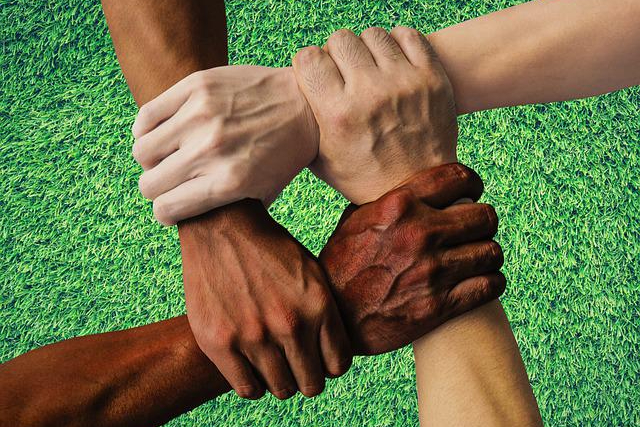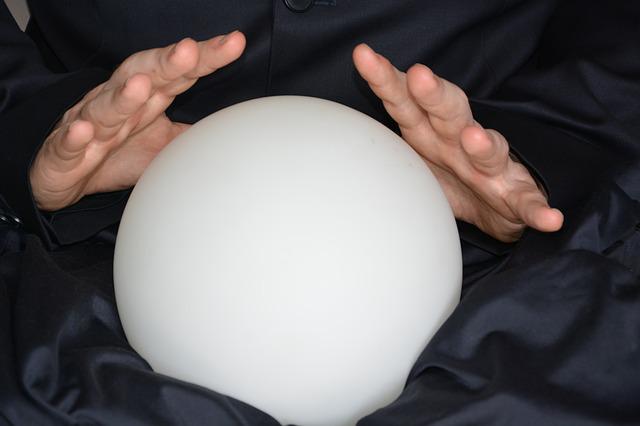The concept of free will drives most modern human societies, although, as science is slowly discovering, it may not be as “free” as we think. Instead of being consciously chosen, many of our everyday decisions are actually made by the subconscious part of the brain—a complex network of neural signals and connections that we are only now beginning to fully understand.
10. Gaidar

Quite a few people claim to have an innate ability to guess someone’s orientation — colloquially known as “gaydar” — but how realistic is this? At first glance, it may seem like just another way to mask existing stereotypes about someone falling outside the “straight” spectrum, which is quite common. However, according to science, if we switch to our subconscious and don’t actively think about it, most of us have this ability.
Research has shown that people can guess someone's sexual orientation just by looking at a photograph in just one-tenth the time seconds This is true even when all parts of the photo except the face are cropped out. This means it has little to do with stereotypical factors like clothing or mannerisms, and more to do with how the human brain naturally responds to faces.
Research also shows that while everyone has it to some degree, some people are better or worse at it than others. For example, people who adhere to homophobic views, do not cope very well with these studies.
9. Magnetoreception

The ability to sense the Earth's magnetic field - or magnetoreception - has been widely discovered and studied in the animal kingdom. From migratory birds to marine animals and even some species butterflies — it comes in different forms in different species. Most of them can also see the magnetic field with their vision, which sounds cool.
While it would be convenient to always have a built-in GPS, people have largely lost this ability. Some recent research , however, show that not all of this may be gone. One study by scientists at the California Institute of Technology and the University of Tokyo found that shifts in the magnetic field of our surroundings cause noticeable changes in the brain, proving for the first time that humans have some form of magnetoreception. It’s also entirely subconscious, which may have been quite useful for navigation in our early days.
8. Keep track of time

Circadian rhythms are changes within the body on 24-hour cycles, and they can be found throughout the tree of life. Nocturnal animals use them to sense daylight without going outside and putting themselves in danger. Many flowers that respond to daylight operate on circadian cycles, in some cases even adapting to seasonal variations.
In humans, circadian rhythms also influence many important functions, such as emotion, sleep, and hunger, all of which are regulated by a master clock operating in a part of the subconscious brain called the suprachiasmatic nucleus, or SCHYA . However, beyond the sleep-wake cycle, we know little about other cycles, especially those that affect our mood. They are largely regulated by light entering through the eyes, as well as genes, and factors such as social activity, stress, and physical activity. exercises .
7. Condemning someone

Whenever we meet someone new, our brain makes a quick guess about who they really are, commonly called intuition. This happens despite our best efforts to judge people by what they say rather than by how they look, and this is where the active part of the brain comes into play. However, we have no control over this process subconsciously.
More importantly, it’s much more accurate. Behavioural researchers are finding that as long as we don’t think about it too much – which reduces overall accuracy – the brain is pretty good at judging someone within a fraction of a second. seconds . This applies to a wide range of areas, from political affiliation to workplace success to sexuality.
However, we still don't know, on how these guesses are based on or what specific facial features correspond to these features.
6. Decision making

The popular notion of free will suggests that we are actively responsible for our decisions, an idea that neuroscientists are now beginning to question. As they have discovered, many parts of this decision-making process operate in the background inside the brain, completely outside the realm of conscious thought. Some studies even show that the decision-making process begins at least 10 seconds before a choice is made, in an area of the brain just in front of the forehead called the frontopolar axil. bark .
This does not mean that the brain makes decisions for us. On the contrary, it simply illustrates complex subconscious signals that translate into a conscious decision that is ultimately made by the active part of the brain. However, we don't know what these signals are or how much they influence our overall decision-making process.
5. Creating false memories

Memories are rarely perfect recollections of past events. It is quite mysterious part of the brain, because we still don’t understand how the brain encodes memories, although we know it involves a lot of guesswork. Whenever we retrieve a memory, the brain tends to add extra information to replace irrelevant or incomplete parts, giving us a coherent—even if sometimes wildly inaccurate—picture of the past.
False memories are a constant problem in law enforcement. Often in cases of childhood abuse, victims cannot tell whether a repressed, traumatic memory from the past actually happened or not. Without corroborating evidence, it was difficult pursue criminals, as research shows that the brain is surprisingly good at creating false memories, especially in cases of trauma, even if the real events were not that far from the truth.
4. Be a racist

One British study A 2009 study found that ethnic and racial minority job seekers were 74% less likely to find a job. Another study in the US found that doctors were more likely to prescribe stronger painkillers to white patients than to African-Americans or Hispanics. In another study from the University of California, Los Angeles, researchers found that people were more likely to find images of black men more threatening , than their white counterparts.
What’s troubling is that in all of these studies — and many others like them — the decision was made by the unconscious part of the brain, without any active racism on the part of the participants. Rather, it’s likely that most subjects — like most people we meet every day — don’t hold biased views, or at least don’t acknowledge them. These decisions are made entirely by the unconscious part of the brain, even though they may be further reinforced by conscious thoughts. Scientists have even identified the parts of the brain involved in this in the process , which begins in early childhood.
3. Proprioception

Proprioception is one of the many senses we have, in addition to the five we know about. Simply put, it is a spatial awareness of the position of our joints that helps us maintain balance and perform everyday physical tasks. It is present even in plants , as they use it to regulate growth and formation in response to external and internal cues such as wind speed.
Proprioception is an important part of our overall perception of the world and is largely dependent on sensory receptors in the muscles, joints, or skin, as well as from the nervous system. While much of this happens in the active part of the brain, it also affects the subconscious brain in ways we don't yet fully understand. Just one example: subconscious proprioception is responsible for posture . This is why we don't have to consciously decide how to sit or stand every time we do it, which would be pretty weird if you think about it.
2. Detection of lies

Almost every study we've done on this has shown that humans are pretty bad at lying. The overall accuracy is somewhere around 54%, which is only slightly better than a coin flip. It's a bit of a mystery really, because we're social creatures and tend to Fine guessing what others are thinking or feeling without thinking about it. That's the whole point of this list!
The problem, it turns out, was that the scientists were looking at the conscious part of the brain. Whenever we try to determine whether someone is lying, we look for visible signs, like fidgeting or avoiding eye contact. Of course, this only works for bad liars, and in the absence of these signals, the brain can’t tell. However, the subconscious brain can still. Experiments have shown that the brain has its own intuitive way of detecting dishonesty or deception, and in most cases it is quite accurate. This is what people mean when they say they have a "bad feeling" about someone.
1. Predicting the future

The brain itself can't observe anything, since it's largely encased in a sealed, dark, bony shell called the skull. It does everything it does by taking in various kinds of signals and inputs from the environment and using them all to create a coherent, understandable image of the world around us.
The amazing thing is that this whole process happens long before everything is happening In fact . The brain works predictively, constantly using past experiences to predict what will happen in the future. This ability, known as anticipation, is quite easy to observe in professional athletes and sportsmen, or even professional musicians, whose brains can predict minor events much faster and more accurately than the rest of us.
According to researchers at the University of California, Berkeley, they are responsible for this two separate parts of the brain, namely the cerebellum and the basal ganglia.














Оставить Комментарий